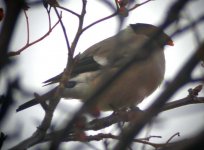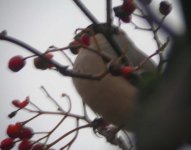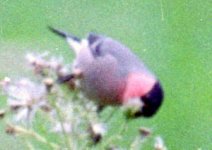
I saw a couple of female Bullfinches on the way into work this morning and I have suspicions they might be of this subspecies. From what I know, Northerns are not safely identifiable in the field but I wondered if there were any features to look for that would at least indicate Northern. I've read that they're bigger and paler than British birds, but is there anything else?







